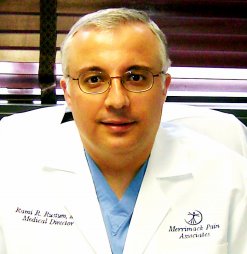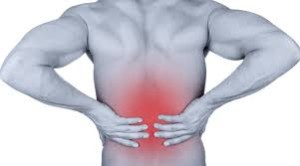By: Dr. Rami Rustum – May, 2016
 Pain is one of the most common reasons people go to the doctor or miss work, and a leading cause of disability worldwide. Most people have back pain at least once.
Pain is one of the most common reasons people go to the doctor or miss work, and a leading cause of disability worldwide. Most people have back pain at least once.
Fortunately, you can take measures to prevent or relieve most back pain episodes. If prevention fails, simple treatment and proper body mechanics often will heal it within a few weeks and keep it functional for the long haul. Surgery is less often needed to treat back pain.
Signs and symptoms of back pain may include:
Muscle ache
Shooting or stabbing pain
Pain that radiates down your leg
Limited flexibility or range of motion of the back
Back pain can come on suddenly and last less than six weeks (acute), which may be caused by a fall or heavy lifting. Back pain that lasts more than three months (chronic) is less common than acute pain.
Back pain often develops without a specific cause that your doctor can identify with a test or imaging study. Conditions commonly linked to back pain include:
Muscle or ligament strain: Repeated heavy lifting or a sudden awkward movement may strain back muscles and spinal ligaments. If you’re in poor physical condition, constant strain on your back may cause painful muscle spasms.
Bulging or ruptured disks: Disks act as cushions between the bones (vertebrae) in your spine. The soft material inside a disk can bulge or rupture and press on a nerve. However, you can have a bulging or ruptured disk without back pain. Disk disease is often found incidentally when you undergo spine X-rays for some other reason.
Arthritis: Osteoarthritis can affect the lower back. In some cases arthritis in the spine can lead to a narrowing of the space around the spinal cord, a condition called spinal stenosis.
 Skeletal irregularities: Back pain can occur if your spine curves abnormally. Scoliosis, a condition in which your spine curves to the side, also may lead to back pain, but generally only if the scoliosis is severe.
Skeletal irregularities: Back pain can occur if your spine curves abnormally. Scoliosis, a condition in which your spine curves to the side, also may lead to back pain, but generally only if the scoliosis is severe.
Osteoporosis: Your spine’s vertebrae can develop compression fractures if your bones become porous and brittle.
Anyone can develop back pain, even children and teens. Research has yet to prove what contributes to back pain. However, these factors might put you at greater risk of developing back pain:
Age: Back pain is more common as you get older, starting around age 30 or 40.
Lack of exercise: Weak, unused muscles in your back might lead to back pain.
Excess weight: Carrying too much weight puts extra stress on your back.
Diseases: Some types of arthritis and cancer can contribute to back pain.
Improper lifting: Using your back instead of your legs can lead to back pain.
Psychological conditions: People prone to depression and anxiety appear to have a greater risk of back pain.
Smoking: This can keep your body from delivering enough nutrients to the disks in your back.
For back pain, frequent questions being asked by the patient may include:
What is the most likely cause of my back pain?
What diagnostic tests do I need?
What treatment approach do you recommend?
If you’re recommending medications, what are the possible side effects?
I have other medical conditions. How can I best manage them together?
How long will I need treatment?
What self-care measures should I try?
What can I do to prevent a recurrence of back pain?
What to expect from your doctor
Your doctor is likely to ask you a number of questions, including:
When did your back pain begin?
Is the pain constant?
Does the pain affect your ability to function? If so, how much?
Do you have other signs or symptoms besides back pain?
Do you do heavy physical work?
Do you exercise regularly? What types of activities do you do?
How often do you feel depressed or anxious?
Do you sleep well?
What treatments or self-care measures have you tried so far? Has anything helped?
While visiting your doctor for back pain, he or she will examine your back and assess your ability to sit, stand, walk and lift your legs. Your doctor might also ask you to rate your pain on a scale of zero to 10 and talk to you about how well you’re functioning with your pain.
These assessments help determine where the pain comes from, how much you can move before pain forces you to stop and whether you have muscle spasms. They will also help rule out more-serious causes of back pain.
If there is reason to suspect a specific condition may be causing your back pain, your doctor may order one or more tests:
X-ray: These images show the alignment of your bones and whether you have arthritis or broken bones. These images alone won’t show problems with your spinal cord, muscles, nerves or disks.
MRI or CT scans: These scans can generate images that may reveal herniated disks or problems with bones, muscles, tissue, tendons, nerves, ligaments and blood vessels.
Blood tests: These can help determine whether you have an infection or other condition that might be causing your pain.
Bone scan: In rare cases, your doctor may use a bone scan to look for bone tumors or compression fractures caused by osteoporosis.
Nerve studies (electromyography, or EMG): This test measures the electrical impulses produced by the nerves and the responses of your muscles. This test can confirm nerve compression caused by herniated disks or narrowing of your spinal canal (spinal stenosis).
Most acute back pain gets better with a few weeks of home treatment. Over-the-counter pain relievers and the use of heat or ice might be all you need. Bed rest isn’t recommended.
Continue your activities as much as you can tolerate. Try light activity, such as walking and activities of daily living. Stop activity that increases pain, but don’t avoid activity out of fear of pain. If home treatments aren’t working after several weeks, your doctor might suggest stronger medications or other therapies.
Medications
Depending on the type of back pain you have, your doctor might recommend the following:
Over-the-counter (OTC) pain relievers: Acetaminophen (Tylenol, others) or nonsteroidal anti-inflammatory drugs (NSAIDs), such as ibuprofen (Advil, Motrin IB, others) or naproxen sodium (Aleve), might relieve acute back pain. Take these medications as directed by your doctor, because overuse can cause serious side effects.
If OTC pain relievers don’t relieve your pain, your doctor might suggest prescription NSAIDs.
Muscle relaxants: If mild to moderate back pain doesn’t improve with OTC pain relievers, your doctor may also prescribe a muscle relaxant. Muscle relaxants can make you dizzy and sleepy.
Topical pain relievers: These are creams, or ointments you rub into your skin at the site of your pain.
Narcotics: Certain drugs, such as Codeine or Hydrocodone, may be used for a short time with close supervision by your doctor.
Antidepressants: Low doses of certain types of antidepressants — particularly tricyclic antidepressants, such as Amitriptyline — have been shown to relieve some types of chronic back pain, independent of their effect on depression.
Injections: If other measures don’t relieve your pain and if your pain radiates down your leg, your doctor may inject Cortisone — an anti-inflammatory medication — or numbing medication into the space around your spinal cord (epidural space). A Cortisone injection helps decrease inflammation around the nerve roots, but the pain relief usually lasts less than a few months.
Education
There’s no commonly accepted program to teach people with back pain how to manage the condition effectively. So education might involve a class, a talk with your doctor, written material or a video. Education emphasizes the importance of staying active, reducing stress and worry, and teaching ways to avoid future injury.
Physical therapy and exercise
Physical therapy is the cornerstone of back pain treatment. A physical therapist can apply a variety of treatments, such as heat, ultrasound, electrical stimulation and muscle-release techniques, to your back muscles and soft tissues to reduce pain.
As pain improves, the therapist can teach you exercises that can increase your flexibility, strengthen your back and abdominal muscles, and improve your posture. Regular use of these techniques can help prevent pain from returning.
Surgery
Few people need surgery for back pain. If you have unrelenting pain associated with radiating leg pain or progressive muscle weakness caused by nerve compression, you may benefit from surgery. Otherwise, surgery usually is reserved for pain related to structural problems, such as narrowing of the spine (spinal stenosis) or a herniated disk, that hasn’t responded to other therapy.
To Email Dr. Rustum: rrrustum@yahoo.com
